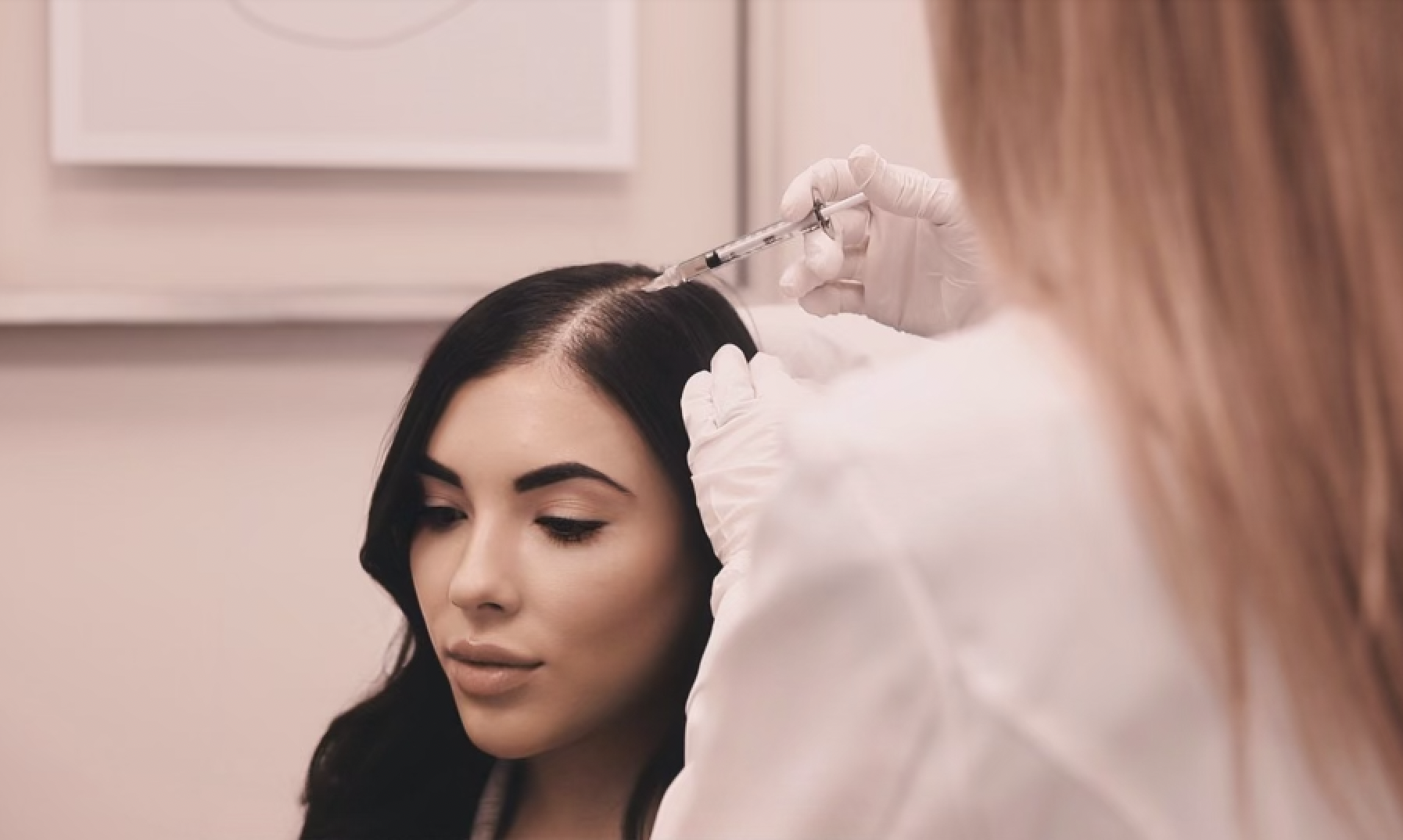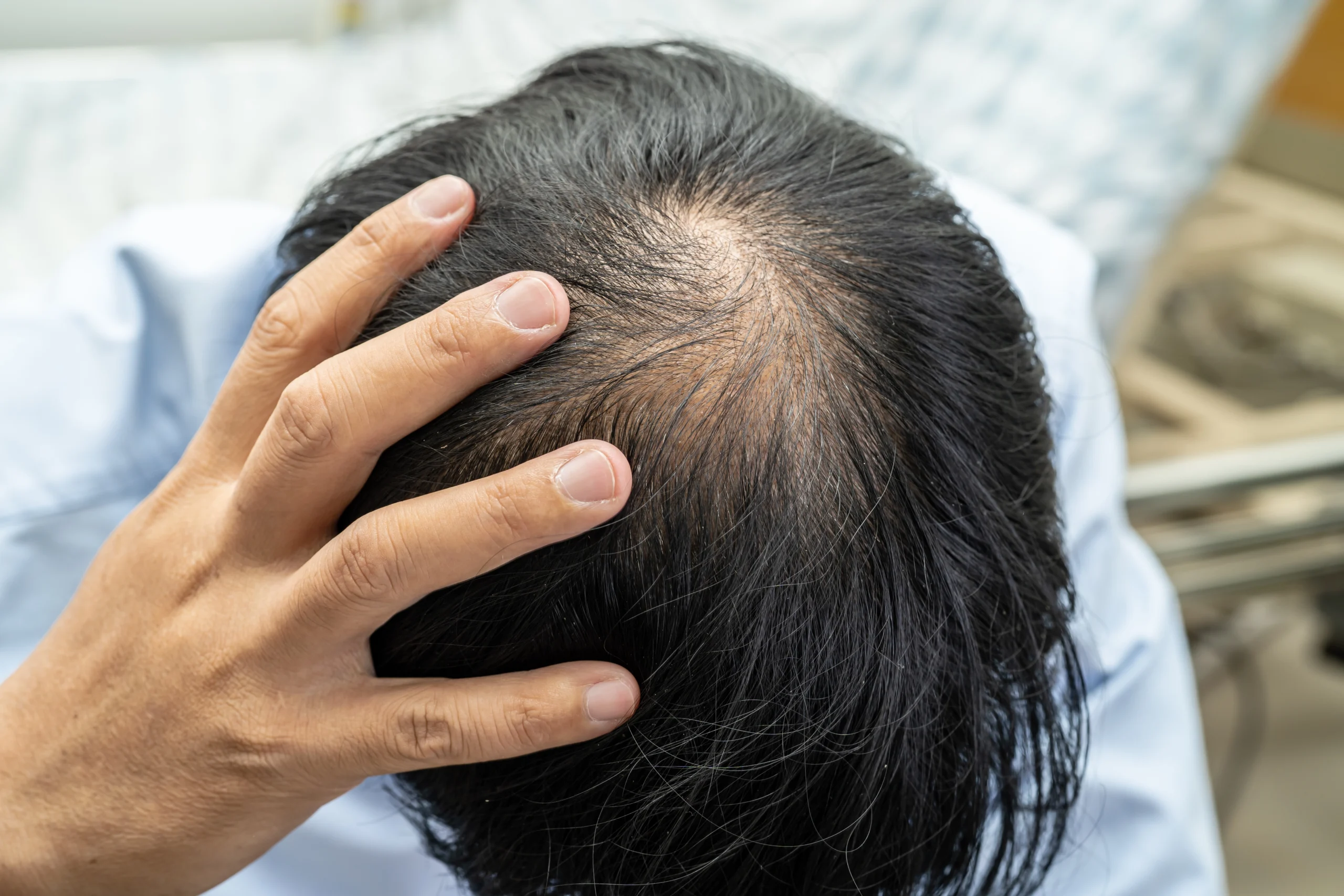
What is Hair Loss and Thinning
Hair loss and thinning refer to the gradual or sudden reduction in hair density and thickness, leading to visible scalp exposure and a decrease in hair volume. Different types of hair loss can manifest as thinning hair strands, balding of hair, or overall hair loss.
At FCP Dermatology we offer a wide range of surgical and cosmetic Dermatology services, in a 5-star luxury setting.
- +1 (416) 861-8600
- Contact via Email
Hair loss and Thinning
Viviscal Hair Supplements
What Causes Hair Loss and Thinning
Risk Factors for Hair Loss
How to Prevent Hair Loss and Thinning
Preventing hair loss and thinning requires a proactive approach to maintaining scalp and hair health. Some effective strategies include:
- Maintain a balanced diet: Ensure your diet includes essential nutrients like protein, iron, vitamins (particularly B vitamins), and minerals like zinc and selenium as they are vital for healthy hair growth.
- Practice good hair care habits: Avoid over-styling, excessive heat styling, and harsh chemical treatments that can damage hair follicles. Use gentle shampoos and conditioners suitable for your hair type.
- Manage stress: Acute stress can cause a hair loss condition called Telogen Effluvium, so incorporate stress-reducing activities into your daily routine.
- Avoid tight hairstyles: Tight ponytails, braids, and hair extensions can cause traction alopecia, a type of hair loss resulting from tension on the hair follicles.
- Be gentle with wet hair: Wet hair is more prone to breakage, so detangle with a wide-tooth comb or a gentle brush and avoid vigorous rubbing with towels.
- Protect your hair from the sun: UV radiation can damage hair follicles and cause hair thinning, so wear a hat or use hair products with UV protection when exposed to the sun for prolonged periods.
- Seek medical advice: If you notice sudden or excessive hair thinning, consult a dermatologist to rule out underlying medical conditions and receive personalized hair growth treatment recommendations.
Signs and Symptoms of Hair Loss and Thinning
Recognizing the signs of hair loss and hair thinning is crucial for early intervention. Here are common indicators to watch for:
- Gradual decrease in hair density and volume: Over time, you may notice your hair becoming thinner and less voluminous, particularly around the crown and temples.
- Noticeable thinning of hair strands: Individual hair strands may appear finer and weaker, making your overall hair texture feel thinner than before.
- Widening of the hair part: The part in your hair may start to widen, with more scalp visible through the hair.
- Receding hairline in men: Men may observe their hairline moving further back from the forehead, forming a distinct “M” shape.
- Sudden hair shedding or appearance of bald patches: You may experience periods of rapid hair shedding, which can sometimes lead to the sudden development of bald spots on the scalp.
- Changes in hair texture: Your hair may feel different, becoming finer, coarser, or more brittle than usual.
- Visible scalp exposure: Due to decreased hair coverage, your scalp may become more visible, especially under bright lights or when styling in specific ways.
- Itching, redness, or scalp tenderness: These symptoms may indicate an underlying condition requiring a Dermatologist’s attention.
Awareness of these signs empowers individuals to seek appropriate medical advice and treatment to address the underlying causes of hair loss and promote hair growth.

Professional Consultation
A professional consultation from a qualified dermatologist is paramount when addressing hair loss and thinning. Dermatologists possess specialized knowledge and training in diagnosing and treating hair-related conditions, ensuring accurate identification of the underlying causes.
- This expertise is invaluable for developing tailored treatment plans that address the specific factors contributing to hair loss, whether they stem from genetics, hormonal imbalances, medical conditions, or other triggers.
- With a dermatologist’s guidance, you can access evidence-based treatments and interventions that are safe and effective, minimizing the risk of ineffective remedies or exacerbating the issue.
- Ongoing monitoring and support from a dermatologist provide reassurance and optimization of treatment outcomes, empowering you to restore hair health and regain confidence.
Best Hair Loss Treatments
Platelet-Rich Plasma (PRP) Therapy: PRP for hair loss involves extracting a small amount of blood from the patient, processing it to isolate platelet-rich plasma, and injecting it into the scalp. The growth factors in PRP stimulate hair growth and improve hair density, showing promising results in both men and women with various types of hair thinning.
Microneedling for Hair Loss: Microneedling for hair growth involves using a microneedling device to create tiny punctures in the scalp. Microneedling stimulates the body’s natural healing response and increases blood flow to the scalp, promoting hair growth. Hair microneedling can enhance the absorption of topical treatments and can be combined with PRP or hair vitamins for synergistic effects.
Viviscal Hair Supplements: Viviscal is a dietary supplement formulated with marine-derived ingredients like AminoMar™ complex, biotin, vitamin C, and zinc. It nourishes hair follicles from within, supports healthy hair growth, and reduces hair shedding. It is suitable for men and women experiencing thinning hair or hair loss due to various factors.
Theradome Red Light Laser Hair Helmet: The Theradome laser hair helmet is a wearable device equipped with low-level laser light therapy (LLLT) technology, stimulating hair follicles, prolonging the hair growth phase, and improving hair density and thickness. Using the Theradome helmet for short sessions at home several times weekly can yield visible results over time.
Acorn Stem Cell Banking: Acorn stem cell banking involves collecting and preserving stem cells from your own hair follicles. This offers a potential resource for regenerative medicine applications, including hair restoration. Banking stem cells provides a valuable opportunity for cutting-edge therapeutic interventions.
These treatments offer diverse approaches to addressing hair loss and thinning, and consulting with a dermatologist can help determine the most suitable options based on individual needs and goals.

